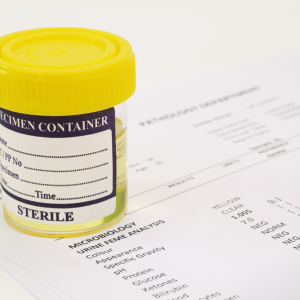Due to the increase in cases of mortality from chronic diseases several years ago, universal free medical examination was introduced in Russia. Every citizen of the country can voluntarily pass it. The medical examination is a whole set of examinations that allow you to determine possible health problems in order to be able to quickly begin treatment. If you are interested in medical examination, from this article you can find out what tests are included in it.
What is included in the initial stage of diagnosis?
The purpose of the initial stage is to identify the presence of chronic diseases and health problems. These studies are largely common, however, they allow you to roughly evaluate your health status and state the presence or absence of pathologies. Casting is a good opportunity to undergo all examinations at once. This approach will significantly save your time, and the collective work of doctors will help to summarize the results of tests and examinations.
In the first stage of the medical examination, you will be offered the following medical examinations:
- Reception of a therapist and filling out a common questionnaire. The questionnaire will need to indicate possible complaints about health, injuries, diet, drinking alcohol and tobacco products, the level of its physical activity. This will help draw preliminary conclusions about the state of your health.
- Measurement of growth and weight. This is required to calculate the body mass index - if you have excess or, on the contrary, insufficient weight, you can fall at risk for certain diseases.
- Pressure measurement. Increased pressure is one of the dangerous symptoms. Low pressure does not create a direct threat to life, but also indicates problems.
- General blood analysis. Here, many indicators are examined that will help identify a variety of diseases.
- Urine analysis is also included in the first stage of medical examination to identify kidney problems or cystitis in women.
- Fluorography allows you to determine tuberculosis in the early stages, when its treatment is still possible.
- Gynecological examination for women. It also includes the capture of strokes to determine the cervical cancer.

Additional tests for older people are also provided. Among them:
- ECG for men's sexes who have reached 36 years.
- After 39 years, citizens will be offered a detailed blood test, measurement of intraocular pressure, another biochemical blood test for hepatitis, pancreatitis and diabetes, ultrasound of the abdominal cavity and mammography for women to diagnose breast cancer.
- After 45 years, a fecal analysis is supposed to detect intestinal cancer, as well as an ECG for women.
- After 51 years, everyone is supposed to consult a neurologist, and men can undergo an additional blood test for prostate cancer.
The totality of all these tests will make it possible to make a fairly complete and objective conclusion about your health. If all the indicators are normal, this is where the diagnosis ends for you. The therapist will only give you a number of recommendations to maintain health and prevent the diseases to which you are prone. If during the examination your predisposition to one or another disease is found, the doctor’s advice should be extremely seriously approaching.
What is included in the secondary examination?
If at the first stage of the examination it turns out that you are absolutely healthy, you will not need the second stage of examinations. If you have found any pathologies, to clarify the diagnosis, you will be invited to conduct a number of more complex studies. Secondary examination is also absolutely free.
Diagnostic methods will entirely depend on your specific problem - you can first discuss with the doctor, which was found at the first stage and what additional tests will be needed. The medical examination is built in such a way that immediately after identifying the disease during the first stage, you can go to more serious tests with specialists of a particular profile. This will significantly save time and quickly make the most accurate diagnosis.

The results of the medical examination
At the end of the medical examination, this or that health group will be assigned to you:
- The first group is received by absolutely healthy patients who did not identify diseases or risks for their development.
- The second group is people without chronic diseases, but having a predisposition to them. This is often indicated by increased pressure, excess weight, excess sugar in the blood.
- People suffering from chronic diseases fall into the third group. They will need a number of additional examinations and consultation of a specialist to start treatment. There is no need to postpone the treatment of chronic diseases, even if nothing is bothering you so far - the medical examination was created precisely with the aim of detecting diseases at an early stage in order to cure them in a timely manner.
Usually patients spend about a week in a hospital. At the end, they can talk with the therapist and ask all questions of interest. Also, everyone who has undergone diagnostics is issued a health passport with the results of all tests and detailed recommendations for treatment, prevention of diseases, diet or work schedule - depending on what problems you have identified.
The medical examination takes place once every three years for each citizen - every year, people can pass in certain age frames for free. It is worth finding out in advance in which year you can undergo a medical examination.
If you are interested in medical examination, you should contact your city clinic. Private clinics also begin to take part in the program of universal free medical examination, but such cases are still quite rare. It is also worth considering that by the end of the year there are large lines for medical examination, so the visit to the clinic should not be postponed for a long time.

Health should be monitored regularly, especially with age when the risk of developing many chronic diseases increases many times. In the initial stages, almost any disease can be cured, and if it is detected in the later stages, treatment is much more difficult. The medical examination is introduced specifically to identify life -threatening diseases as early as possible. If you want to check your health, during the medical examination you can conduct a number of complex tests for examining the whole organism.






























